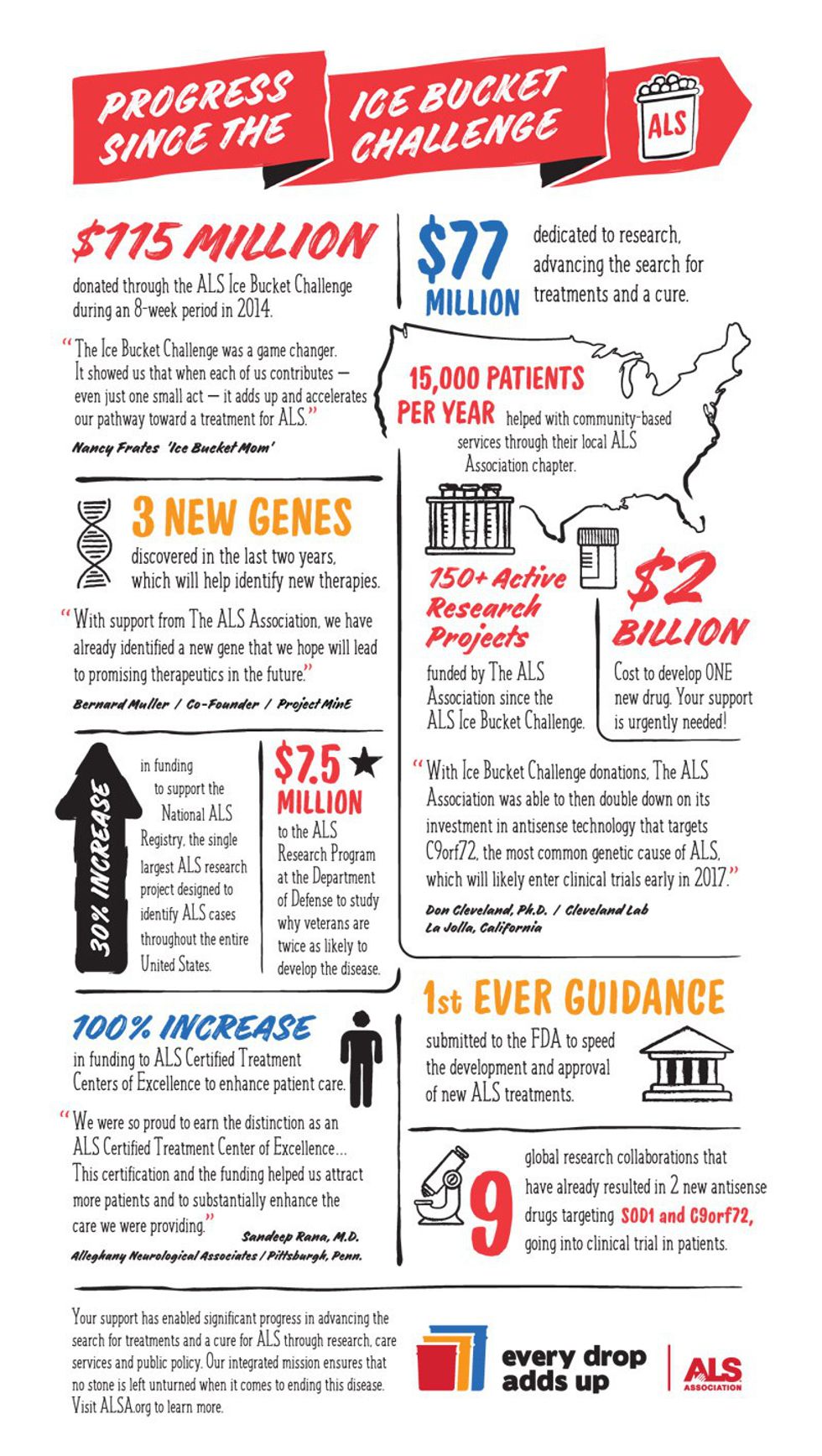Two years ago, the ALS (Amyotrophic Lateral Sclerosis or Lou Gehrig’s disease) ice bucket challenge took over the internet one pail at a time. From celebrities to athletes to everyday people, individuals would challenge a few friends via video to either donate money to ALS research or to also get soaked by a freezing splash of water, as the challenger was about to. Thankfully, many did both tasks – leading to the campaign’s massive success.
However, many critics also took to the internet to express their grievances with the social media tactic. Calling it slacktivism – actions performed via the internet in support of a political or social cause but regarded as requiring little time or involvement – but the numbers don’t lie. ALS received unprecedented publicity and donations, as seen in the infographic from The ALS Association below.
That $77 million in research has led to identifying a new ALS gene, NEK1. This discovery through the largest study yet of familial ALS is “among the most common genes that contribute to the disease, providing scientists with another potential target for therapy development.” The researchers of Project MinE believe that even though only 10 percent of ALS cases are inherited, genetics indirectly plays a large role across the board of cases.
To continue the momentum, the association is encouraging participants and donors to take up the challenge annually, and to not let it simply pass by as a campaign from two summers ago.
According to the New York Times, Brian Frederick – executive vice president for communications and development for the ALS. Association – sees a brighter future thanks to the recent outpour of support.
“There’s an excitement and an energy in the ALS research community that has not been there before. There’s a real sense of hope and optimism among many people living with ALS now.”









 The minimum wage is not a living wage.
StableDiffusion
The minimum wage is not a living wage.
StableDiffusion
 influential nations
StableDiffusion
influential nations
StableDiffusion












